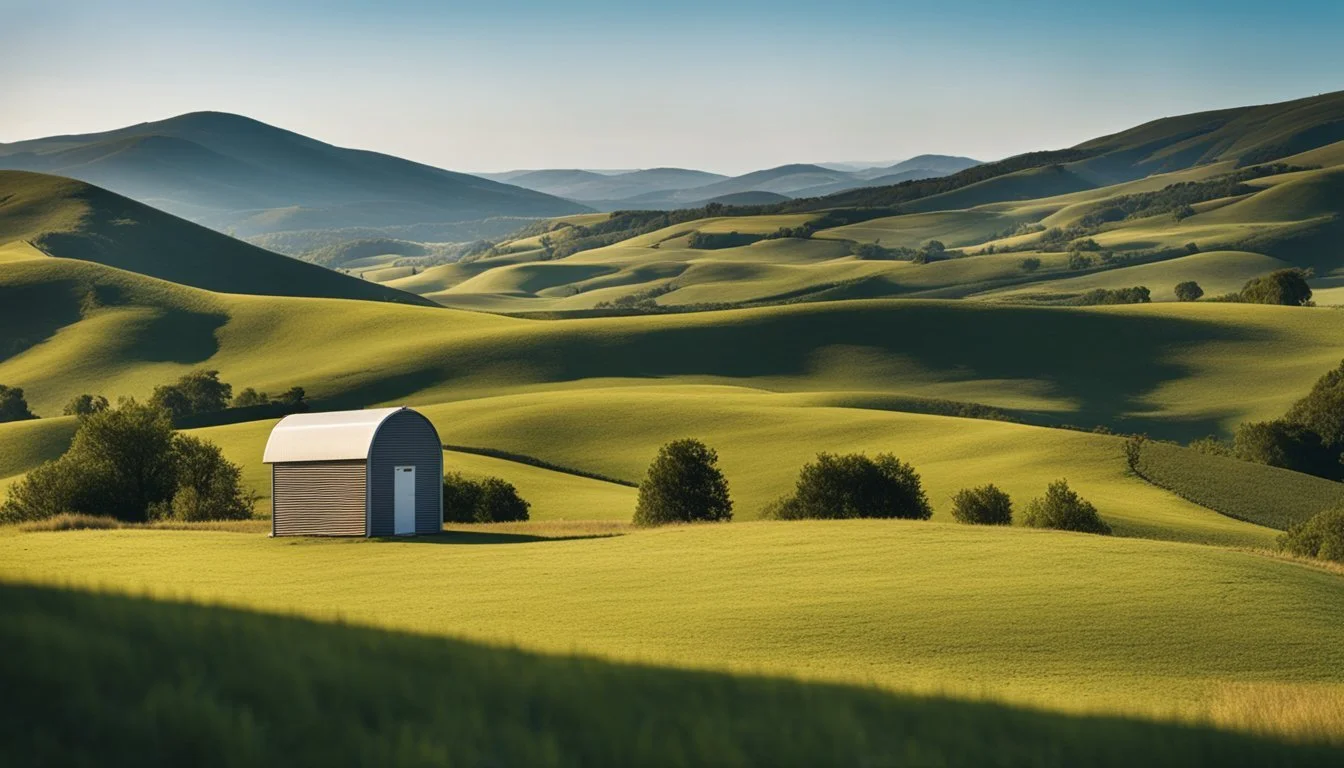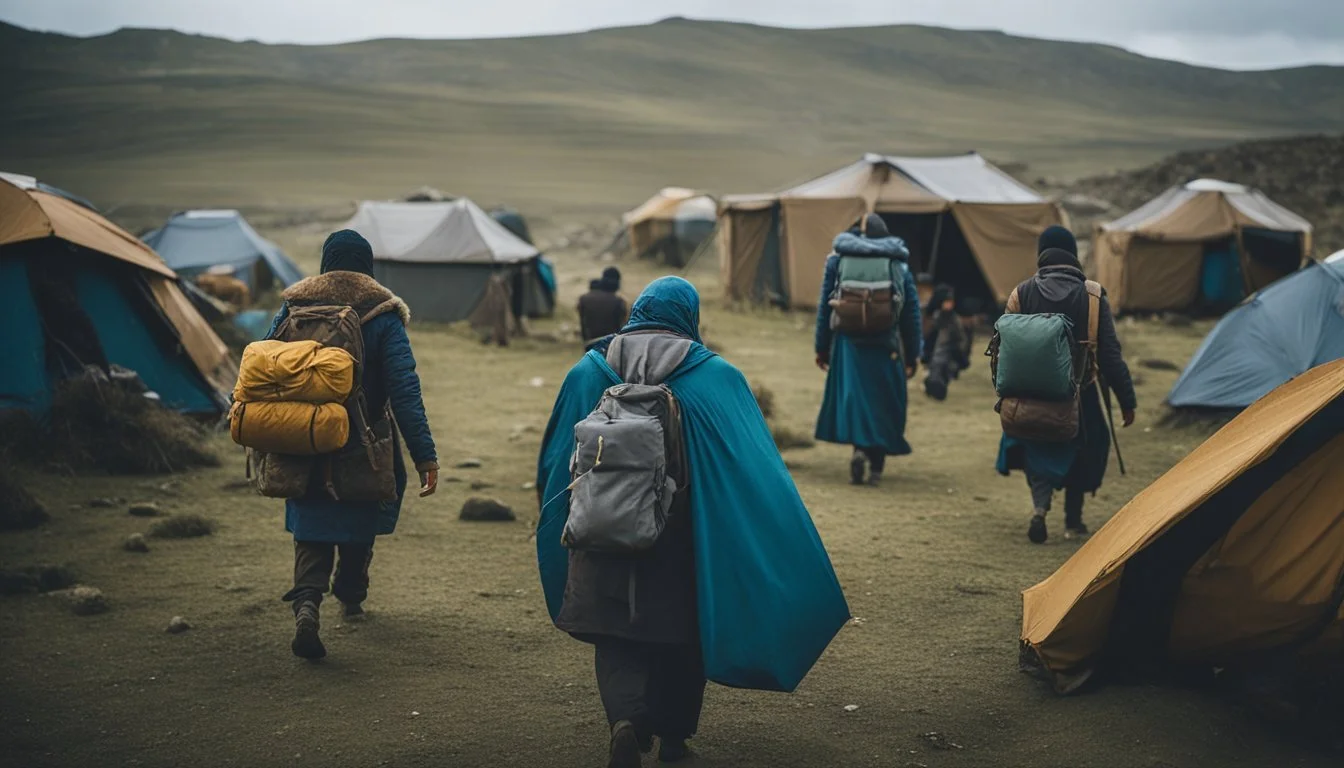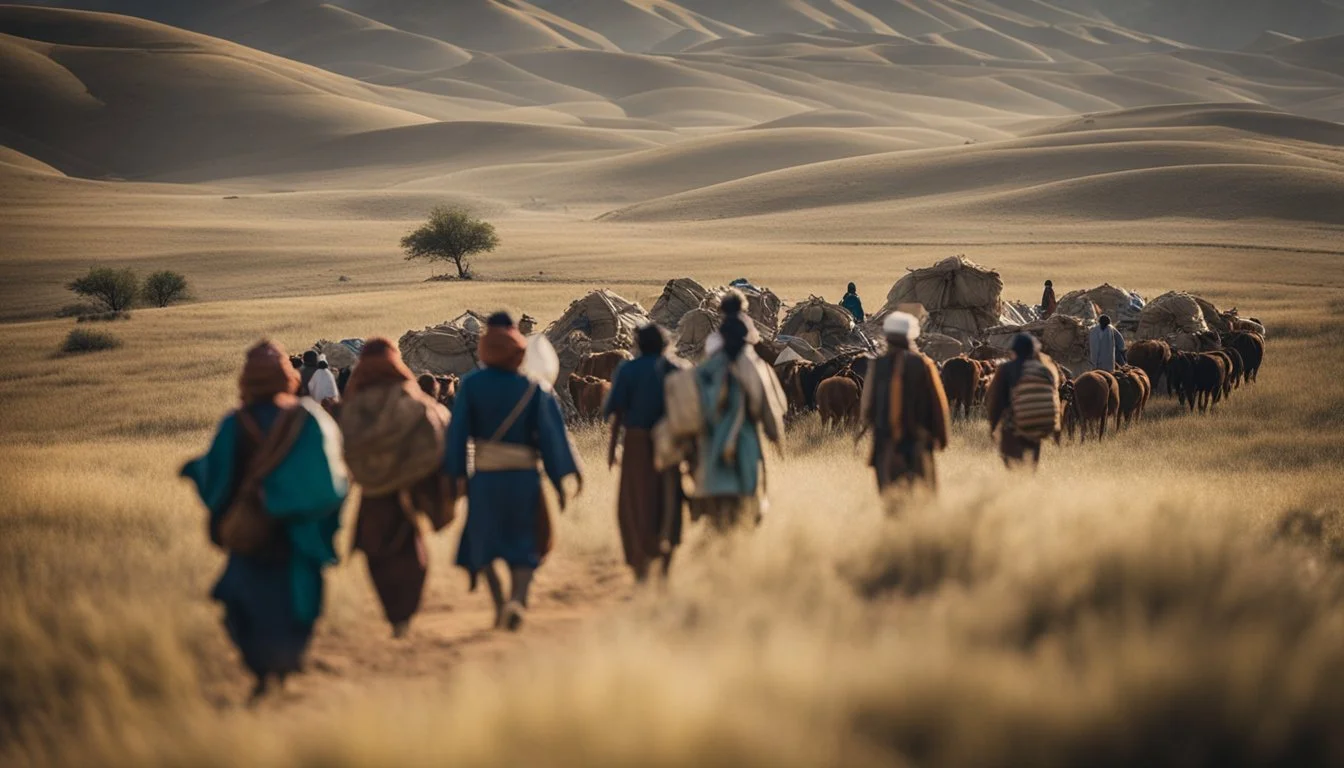10 Documentaries About the Nomadic Lifestyle
Exploring Modern Wanderers
The fascination with the nomadic lifestyle has continually captivated audiences, offering glimpses into a life unbound by traditional societal constraints. These documentaries provide an intimate look at the diverse ways people embrace a life on the move, from the rugged wilderness to bustling urban jungles.
For those curious about the essence of life without a permanent home, these films offer honest portrayals of the rewards and challenges faced by modern nomads. Whether driven by a desire for simplicity, adventure, or a deeper connection with nature, the stories told in these documentaries resonate with a universal longing for freedom and exploration.
1) Nomadland (2020)
"Nomadland" (2020) is a gripping documentary-style drama directed by Chloé Zhao. It follows Fern, played by Frances McDormand, a woman in her sixties who loses everything in the Great Recession. She sets off on a journey through the American West, adopting a nomadic lifestyle by living out of her van.
The movie captures the real-life experiences of contemporary nomads. These individuals travel the country, often working seasonal jobs and forming tight-knit communities along the way. "Nomadland" sheds light on the hardships and the freedom that come with this way of life.
Charlene Swankie, a real-life nomad, portrays a version of herself in the film. Her performance, along with those of other real nomads, adds authenticity to the story. The movie is based on a 2017 nonfiction book by Jessica Bruder, who spent years documenting the lives of these modern nomads.
The film received critical acclaim for its realistic portrayal of nomadic life and its powerful storytelling. It won several awards, including the Academy Award for Best Picture. "Nomadland" provides an insightful glimpse into a unique and often overlooked subculture in America.
For more information, refer to the Nomadland IMDb page.
2) The Salt of the Earth (2014)
The Salt of the Earth (2014) documents the life and work of Brazilian photographer Sebastião Salgado. Directed by Wim Wenders and Juliano Ribeiro Salgado, the film showcases the incredible journeys undertaken by Salgado over the past four decades.
Sebastião Salgado has spent much of his career capturing powerful images of societies in remote and often unseen parts of the world. His work highlights the struggles and resilience of these communities.
The film also touches on personal aspects of Salgado's life. It explores how witnessing events like the Rwandan genocide profoundly affected him, leading to a period of deep disenchantment.
Through striking visuals and intimate interviews, The Salt of the Earth portrays nomadic lifestyles and the photographer’s efforts to document and preserve these fading ways of life.
For more information, visit IMDb.
3) Tracks (2013)
"Tracks" (2013) is based on the true story of Robyn Davidson, a 27-year-old woman who undertook an incredible journey across the Australian desert.
In 1977, Davidson left city life behind and arrived in Alice Springs with the ambition to travel 1,700 miles to the Indian Ocean. Her journey, accompanied by four camels and a dog, was initially met with skepticism.
Over time, Davidson earned the respect and support of those around her. Her dedication and the harsh realities of life in the desert are captured vividly in the documentary, showcasing both the challenges and the beauty of her path.
The film provides an intimate look at the nomadic lifestyle and the intense personal and physical trials Davidson faced. It's a story of perseverance, courage, and the unique connection between humans and animals in the most unforgiving environments.
For more information, visit the Tracks (2013) IMDb page.
4) Into the Inferno (2016)
Directed by Werner Herzog, "Into the Inferno" explores the captivating and dangerous world of active volcanoes. The documentary takes viewers to various locations, including the Vanuatu Archipelago and the Galapagos Islands. It examines not just the geological phenomena but how these volcanoes impact the cultures of nearby communities.
Herzog teams up with volcanologist Clive Oppenheimer to provide scientific insights into these fiery mountains. Together, they embark on an incredible journey, capturing the raw power and beauty of volcanoes.
The film delves into the relationship between humans and nature, highlighting how volcanic activity influences daily life for those living in proximity. It offers an arresting visual experience while providing valuable information about the natural world.
For more information on the film, please visit Wikipedia.
5) Expedition Happiness (2017)
Expedition Happiness is a 2017 documentary capturing the journey of a young German couple and their dog. Felix Starck directed the film, while Mogli, his partner, plays a significant role in narrating their experience.
They travel across North America in a converted American school bus, which they transformed into a mobile home. Their adventure covers various landscapes, including Canada, Alaska, the U.S. West Coast, and Mexico.
The couple's journey is driven by a desire to escape urban life in Berlin and immerse themselves in nature. The film highlights their encounters with stunning natural beauty, chilly climates, and the daily challenges of a nomadic lifestyle.
This documentary resonates with those who yearn for freedom, adventure, and connection with nature. The cinematography captures the vastness and diversity of the landscapes they traverse. It also offers insights into the logistical and emotional aspects of long-term travel.
For more information, you can visit the IMDb page for Expedition Happiness.
6) The Eagle Huntress (2016)
"The Eagle Huntress" is an internationally co-produced Kazakh-language documentary film directed by Otto Bell. It features Aisholpan Nurgaiv, a 13-year-old Kazakh girl from Mongolia.
Aisholpan aspires to become the first female eagle hunter to compete in the eagle festival at Ulgii, Mongolia, a tradition typically dominated by men.
Narrated by Daisy Ridley, the documentary follows Aisholpan's journey and determination to break through centuries-old gender barriers.
The film highlights the pristine landscapes of the Mongolian Altai Mountains where Kazakh nomadic tribes continue their traditional lifestyle.
The story not only showcases Aisholpan's skills and courage but also provides insight into the cultural heritage and customs of the Kazakh people.
Viewers are introduced to the bond she forms with her golden eagle and her supportive family, especially her father, who trains her.
The cinematography captures stunning visuals of the vast steppe, making "The Eagle Huntress" both an inspiring and visually captivating documentary about persistence and breaking stereotypes.
More information on "The Eagle Huntress" (2016)
7) All the Wild Horses (2017)
"All the Wild Horses" (2017) is a British documentary directed by Ivo Marloh. The film centers around the Mongol Derby, a grueling equestrian endurance race spanning 1,000 kilometers across the Mongolian steppe.
The Mongol Derby is known as the longest and toughest horse race in the world. Riders from various countries, including the USA, Canada, South Africa, Ireland, and the UK, participate in this challenging event.
The documentary follows these international riders as they navigate through mountains, deserts, and steppe terrain. It's a true test of endurance and skill, both for the riders and their horses.
Through stunning visuals and gripping storytelling, the film captures the essence of the race and the breathtaking landscapes it traverses. The footage includes aerial shots providing a unique perspective on the vast and remote Mongolian wilderness.
For more information on "All the Wild Horses," visit Wikipedia.
8) Happy People: A Year in the Taiga (2010)
"Happy People: A Year in the Taiga" is a documentary film directed by Dmitry Vasyukov, with English narration by Werner Herzog. The film offers an in-depth look at the lives of the inhabitants of Bakhta, a remote village in Siberia. The residents live disconnected from modern civilization, relying on traditional methods and skills.
The documentary highlights the daily lives of trappers, hunters, and fishermen who sustain their existence through the seasons. It captures the cycles of life in the Taiga, showing both the beauty and harshness of the environment. The villagers' resilience and self-sufficiency make them fascinating subjects.
Viewers are introduced to the natural landscapes of the Siberian Taiga, offering stunning visuals and a sense of isolation. Herzog's narration adds a reflective dimension to the film, making it not just a documentary but also a contemplative piece on human endurance in extreme conditions.
For more information on "Happy People: A Year in the Taiga," visit its Wikipedia page.
9) The Human Element (2018)
"The Human Element" (2018) explores the profound and intricate relationship between humans and nature. Directed by Matthew Testa, this documentary showcases the work of acclaimed photographer and explorer James Balog, who has spent decades capturing how human actions impact the environment.
The film examines the four classical elements—earth, air, water, and fire—highlighting how they influence and are influenced by human activities. Dramatic visuals and compelling narratives present the urgent need for balance in our interactions with the natural world.
The documentary underscores the significant changes brought about by human activity, stressing the importance of understanding our role in shaping the future of the planet. Balog's work challenges viewers to consider their own responsibilities in mitigating environmental impacts.
For more information on "The Human Element," visit its IMDb page.
10) Maidentrip (2013)
Maidentrip (2013) documents the incredible journey of Laura Dekker, a 14-year-old Dutch sailor. Determined to become the youngest person to sail around the world alone, she embarked on a two-year voyage. Her ambitious quest began in 2010, following a year-long legal battle with Dutch authorities.
Throughout the film, viewers witness Laura's courage, resilience, and moments of isolation as she navigates open waters. The documentary presents an intimate look at her personal struggles and triumphs during the journey. Laura's determination and youthful spirit are evident in every frame.
The film captures not only the physical challenges she faced but also the emotional and psychological aspects of solo travel. Maidentrip is a captivating portrayal of a young adventurer chasing her dreams against all odds.
More information about Maidentrip (2013)
Understanding the Nomadic Lifestyle
The nomadic lifestyle has evolved significantly from its historical roots to its modern-day manifestations. Key distinctions include the traditional practices of ancient nomadic tribes and the contemporary practices of digital nomads.
Historical Context
Historically, nomadism was a way of life for many tribes and communities. They roamed vast territories, following seasonal patterns in search of food and resources. Examples include the Mongolian tribes and Bedouins, who navigated deserts and steppes. These groups valued mobility, self-sufficiency, and adaptability, critical for survival. They carried essentials in portable forms, often using animals for transport. Nomadic trades, such as herding and trading, facilitated their lifestyle, integrating them into broader economic systems. This context was driven by necessity and culture.
Modern-Day Nomads
Modern-day nomads, often referred to as digital nomads, leverage technology to sustain their lifestyles. Unlike traditional nomads, their mobility is enabled by the internet and remote work. Individuals in this category can work from anywhere, balancing travel with professional commitments. The digital nomad community is diverse, encompassing freelancers, entrepreneurs, and remote employees. They often form transient communities, characterized by co-working spaces and digital hubs in various cities. Key elements include minimalism, as they often live out of backpacks, and a focus on experiences over possessions. This lifestyle appeals to those seeking freedom and flexibility in work and living environments.
Challenges Faced by Nomads
Nomads around the world encounter numerous obstacles, primarily concerning economic stability and access to healthcare, which are essential for their well-being and sustainability.
Economic Stability
Economic stability often eludes nomadic groups. Their income sources are predominantly linked to livestock, craft sales, or seasonal labor. Livestock, being their primary asset, can lead to unstable incomes due to fluctuating market prices and harsh climate conditions that affect herd health.
Modern barriers, such as limited access to financial services, hinder opportunities for investment or savings. Mobility also restricts access to formal education, which can curb economic advancement. In many regions, nomads face land rights issues, with governments and corporations often claiming lands traditionally used for grazing, forcing them to migrate to less hospitable areas.
Access to Healthcare
Healthcare access is another critical concern for nomadic communities. They often reside in remote areas far from medical facilities. This geographic isolation leads to challenges in obtaining timely medical treatment.
Preventive healthcare services, such as vaccinations, are hard to deliver consistently due to their mobile lifestyle. Additionally, traditional medical practices and distrust of modern medicine can further complicate healthcare provision. Maternal and child health is particularly vulnerable, with higher rates of morbidity and mortality due to lack of access to skilled care.
Health education and awareness are also limited, compounding issues related to hygiene and disease prevention.
Cultural Impact and Exchange
Documentaries about nomadic lifestyles highlight how different cultures interact and adapt through their journeys. They show the blend of traditions, languages, and practices as nomads travel and integrate with various communities.
Intercultural Communication
Intercultural communication is essential for understanding in a nomadic lifestyle. Nomads often encounter diverse cultures with different languages and traditions. Documentaries like Nomadland illustrate how communication bridges gaps between communities. Nomads use verbal and non-verbal cues, local dialects, and sometimes create new linguistic blends.
These exchanges can lead to enriched mutual respect and friendship. Films like Anthony Bourdain: Parts Unknown show how food and shared meals become an effective medium of communication, fostering better relationships.
Cultural Adaptation
Cultural adaptation involves adjusting and often blending practices from different cultures. Many nomadic groups adopt elements from the cultures they interact with. This can include adopting new customs, attire, or dietary habits, as seen in documentaries about modern nomads.
For instance, Dark Tourist explores how nomads may participate in local festivals and rituals, enhancing their cultural experience. These adaptations are not merely superficial but often lead to a deeper integration, where nomads maintain their identity while embracing new cultural nuances.
The ability to adapt helps nomads thrive in varied environments, demonstrating resilience and flexibility.





